Original URL: https://www.theregister.com/2011/07/28/games_review_call_of_juarez_the_cartel/
Call of Juarez: The Cartel
Drugs, thugs and automobiles
Posted in Personal Tech, 28th July 2011 06:00 GMT
Review In theory, The Cartel's contemporary setting is a wise move for the Call of Juarez series. The moderate success of the first two Western-themed games was instantly undone when Red Dead Redemption moseyed into the overlooked genre, rounded up the pretenders and rode them out of town. By relocating to the present day, developer Techland shifts the series away from comparison with Rockstar's inimitable classic. But in doing so, The Cartel strays into the sights of modern Triple-A shooters, and the comparisons are no more favourable.
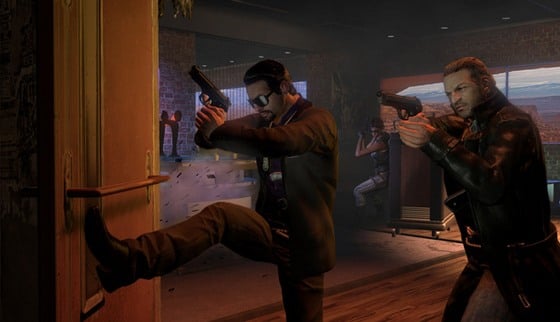
Shoes at the door?
By their standards, The Cartel is flimsy and easily picked apart. The mechanics and narrative are functional, but highly derivative and devoid of innovation. Controls feel floaty and bullets weightless, combat is clunky and enemy AI non-existent. And there's an egregious level of repetition, which means when you've played through its opening hour, you've experienced pretty much everything on offer. Worst of all, there's an abundance of glitches and overall lack of polish, which smack of an unfinished game.
The plot may be finished, but you'll hardly notice. After showing initial promise, the story of an inter-agency task force sent to dismantle a powerful Mexican drugs cartel quickly succumbs to cliché – its hackneyed American crime drama tropes embodied by its three playable characters: the hardboiled, “I'm too old for this shit” LA Homicide Detective, the slick, suspicious DEA Special Agent and the sassy, streetwise FBI Agent.
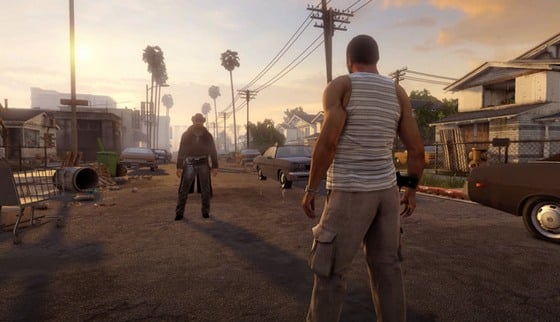
Draw! "That'll be £20 then mate"
While the narrative influences are painfully obvious: two parts Lethal Weapon and one part The Wire, it's Call of Duty's influence on gameplay that invites the most unflattering comparisons. The previous game, Bound in Blood, was equally indebted to CoD, but the similarities didn't seem so glaring when firing six-shooters from horseback in the Wild West as they do firing Uzi 9mms from Humvees in South Central LA.
Gunfights are as crowded and frenetic as anything CoD throws at you, but they're let down by pitiful enemy AI and shonky level design. Already a simple shooting gallery, with pop-up enemies walking blithely out from cover and into the firing line, gunplay is further reduced by the return of Bound in Blood's depressingly familiar bullet-time Concentration mode and breach-door set-pieces, which feature all too prominently throughout the eight-hour campaign.
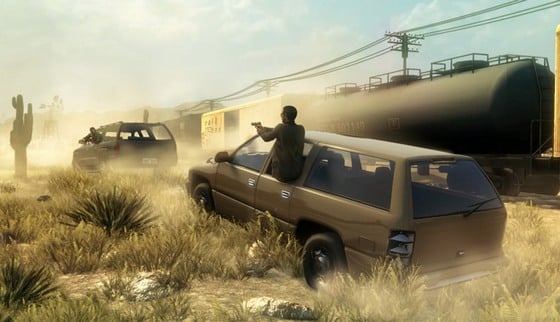
Off-road rage
Driving sections offer little respite from the monotony. Most see you behind the wheel, fleeing enemies in pursuit. You can't ram them off the road, though. So gameplay is little more than a cruise towards objective markers, as enemies spray your vehicle with bullets. The few occasions you ride shotgun prove equally vacuous, as you lean out of the car for some basic point-and-shoot vehicular combat.
Making the connection
The game improves slightly in its latter half. Locations are more polished and visuals noticeably improved, especially in the gunfights at a LA rooftop club and later through the cartel's Mexican hacienda stronghold. Here, confined spaces and improved cover and verticality mask the underwhelming AI to good effect, but the myriad technical cracks aren't so easily disguised.
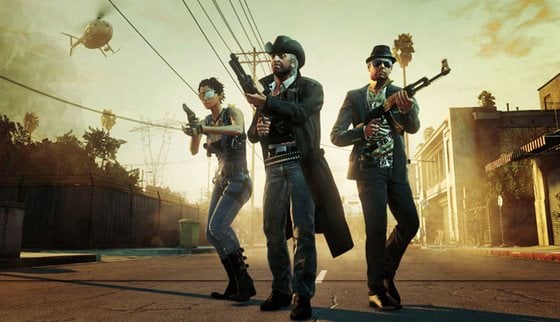
Mosey into suburbia
Subtitles rarely match the dialogue and are often misspelled. Conversations fall out of sync, with NPCs answering questions before you've posed them, or looping one-line responses each time you pass by. Your AI team-mates continually disappear in front of you only to reappear magically one-hundred yards ahead. And clipping is a constant issue, with dead enemies melding into table tops or car bonnets. Then there's enemy animations themselves, which aren't so much ragdoll physics but ragcloth, as single bullets kill outright and dead bodies flop weightlessly to the floor.
The Cartel's on-line offering proves equally weightless when compared to the dominant FPS games. Despite introducing competitive objectives – such as racking up headshots the fastest – the three-player on-line campaign co-op is best avoided altogether, as company serves only to magnify the already mindless gameplay and overwhelming repetition. Multiplayer, on the other hand, is passable. But with just four small maps and two modes, it's an extremely lightweight affair.
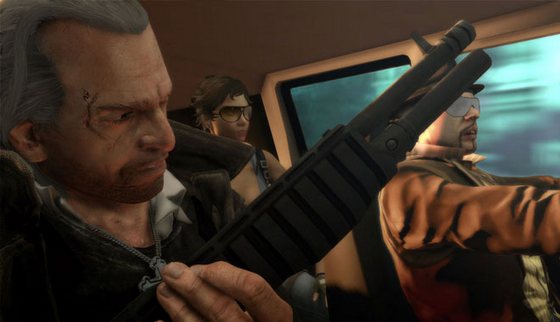
Cock and load
In addition to straight-up Team Deathmatch, there's a Missions mode, in which the criminal team has to, for example, plant Semtex to blow up a safe or steal drugs from a crack house, while the cops work to foil them. It's shallow and limited, but it's not entirely brainless. The mode takes a novel approach to promoting team play, which would benefit many Triple-A shooters. Team-mates receive a bonus of extra health and damage when sticking close together. And you can choose to partner with someone else, which not only allows you to tag enemies to reveal their location to your partner, but also earns you additional xp for faster weapon and perk upgrading.
Verdict
The glimpses of innovation in multiplayer in no way compensate for what is a unremarkable, derivative and poorly executed game. In high-tailing it out of the Wild West, The Cartel might have cleverly avoided a showdown with Red Dead Redemption, but in shifting to modern times, it's walked blindly into a quickdraw against the very best FPS gunslingers. ®
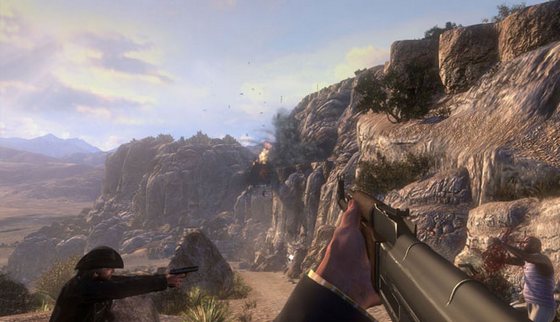
Scenic shots
More Games Reviews |
||||
 Transformers: Transformers:
Dark of the Moon |
 Shadows of Shadows of
the Damned |
 FEAR 3 FEAR 3 |
 Dungeon Dungeon
Siege 3 |
 Child of Eden Child of Eden |